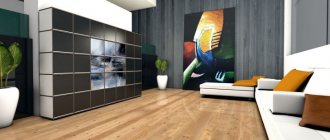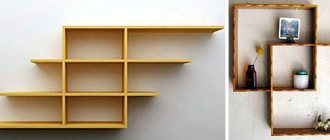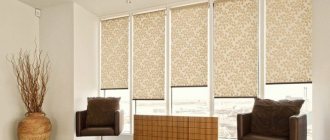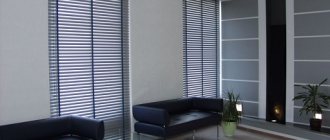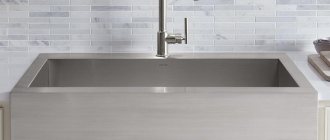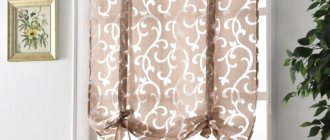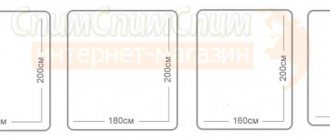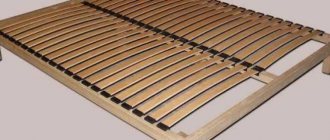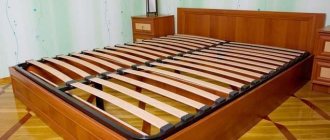What is a mattress pad for?
A mattress cover performs a number of functions. The main one is to protect the mattress from all external negative influences.
This allows you to maintain the cleanliness and integrity of the mattress, since its cost does not allow frequent replacement with a new one. A soft mattress pad is much easier to clean than a full-sized mattress, and they cost much less. Therefore, the mattress cover takes the full impact of dirt on itself, saving the mattress from wear and soiling.
But besides the main function, mattress covers solve a number of other problems:
- waterproof mattress covers protect the mattress from moisture getting into it. Such products are quite expensive, but it takes a long time for moisture to be removed from the mattress, so this function is very useful;
- maintains a microclimate
that is ideal for the human body. That is, the mattress cover creates a thermal insulation layer to retain heat on the surface; - Helps regulate the firmness of the mattress
. It also helps to smooth out the surface of a mattress with dents; - some mattress covers have antibacterial properties;
- prevents the sheet from sliding on the mattress.
Main types of mattress covers
The division of products into types is quite arbitrary. Traditionally, mattress covers are usually divided into thin and thick. The first type includes:
- Protective. Their main function is to protect the mattress from dust and dry contaminants, to extend their service life by protecting the top layer from wear;
- Moisture-proof or waterproof. They protect the mattress from moisture due to the presence of a special layer - a membrane that repels moisture and at the same time allows air to pass through;
- Antibacterial or hypoallergenic. Made from materials that do not cause allergies, they protect the bed from the penetration of dust mites and fungi thanks to a special impregnation with a bactericidal solution;
- Medical. Aimed at protecting the sleeping area from the penetration of various liquids, they are used mainly for caring for bedridden patients.
Thick mattress covers include:
- Orthopedic. Perform the function of regulating rigidity.
- Woolen. They have a healing effect for circulatory dysfunction, radiculitis, osteochondrosis and muscle pain of various origins. Such mattress covers soften the excessive hardness of the main mattress.
- Demi-season. Aimed at thermoregulation. Usually they have two sides - winter and summer.
Helpful advice: When choosing a mattress topper, you need to take into account your primary needs, parameters and type of mattress. A properly selected product will help solve health problems and increase the level of comfort in your sleeping area.
Do you need a mattress protector for an orthopedic mattress?
Since the upholstery of an orthopedic mattress is rarely made of pure cotton, a mattress cover is a must-have attribute. Because of the acrylic, the sheet glides over the surface of the orthopedic mattress. A mattress pad eliminates this.
Also, orthopedic mattresses are thick, so they are heavily saturated with moisture that gets inside. And of course, an oversized orthopedic mattress cannot be washed, unlike a mattress cover. The cover also provides better bed ergonomics, thanks to the use of different fillers.
Reference:
A latex mattress does not require a mattress protector because both the upholstery and filling are durable and easy to clean.
What types do manufacturers offer?
First of all, it’s worth understanding that mattress covers come in different sewing methods:
- pads that are attached to the bed using wide elastic bands at the corners - this is the simplest option;
- covers - can be solid and fit completely over the mattress, fastened with a zipper or made in the form of a sheet with an elastic band; such a mattress cover covers the outer surface of the mattress and its side parts.
The first option is most often orthopedic mattress covers. How to choose the right size so as not to make a mistake? There is nothing complicated in this process, it is important to know the width and length of the bed, but the covering should be adjusted to the size of the bed as much as possible, otherwise such an accessory will bring nothing more than inconvenience.
Simple mattress covers are also made in the form of overlays, which serve as an additional layer to add softness and as a means of preventing contamination on the surface of the mattress. They resemble a thin quilted blanket with a layer of synthetic padding inside, and the outer fabric is predominantly natural material.
Other materials can also be used as filler. How to choose mattress covers and with what filling depends on why it is needed.
- Classic products - there are no special requirements for them, because they are created for better hygiene.
- Orthopedic mattress covers are designed to provide better bed ergonomics. To achieve this goal, different fillers are used: latex, coconut coir.
- Waterproof mattress covers are made from a special membrane material that is absolutely safe, it breathes, it can be washed, and it retains moisture.
- Mattress covers with insulation are mainly products with a wool layer inside; it provides good thermoregulation and is a hygroscopic material, making the bed more comfortable.
Types and sizes of mattress covers
Mattress covers can be universal. But affordable products usually work well for a limited number of tasks. Depending on their purpose, mattresses are divided into the following groups:
- protective;
- corrective;
- orthopedic;
- waterproof;
- medicinal;
- with insulation;
- antibacterial;
- seasonal and many others.
Most mattress covers perform 2-3 functions
. The most popular are the first three types.
The size of the mattress pad should be as close as possible to . It is enough to accurately measure the mattress, and finding the right mattress pad will not be difficult, since there is a wide range on the market.
Reference:
Most mattress covers are available in standard sizes: single, one-and-a-half and double.
Corrective
A cover that can adjust the performance capabilities of a mattress is called corrective. Can perform the following functions:
- able to harden or soften the mattress;
- levels the entire area of the mattress;
- alignment of dents and protruding springs;
- ensuring a comfortable temperature.
This type of mattress cover includes: orthopedic, therapeutic, seasonal and with insulation.
Protective
Mattress covers that protect the mattress from external influences are called protective. They help extend the life of the mattress, eliminating the influence of water, dirt, dust and minor mechanical damage. According to the functions of protective mattress covers, they are divided into:
- classic. Protect the mattress from dirt and minor damage;
- waterproof. Does not allow moisture to reach the mattress;
- hypoallergenic. Made from environmentally friendly materials, they prevent allergies;
- antibacterial. Prevents the appearance of various microorganisms in the bed.
This type of mattress cover is the most common. They are made in any size and from different materials.
Orthopedic (toppers)
Such mattress covers can have a height from 2 to 8 cm. The properties of toppers depend on their filler. The following fillers soften the surface:
- felt;
- latex;
- struttofiber and holofiber.
The following fillers make the surface more rigid:
- coconut fiber;
- horsehair;
- palm coir;
- bamboo fiber and others.
Important: it is highly recommended not to bend toppers filled with coconut coir, as this may damage its structure.
Synthetic orthopedic filler, like Memorix, has the ability to remember its shape and adapts to one person. There are many medium-hard fillers of both natural and synthetic origin.
Each filler also has its own antibacterial or other protective properties.
The main advantage of mattress covers is their ease of care. They are easily removed from the mattress, allowing you to wash or air it. To prevent the case from deteriorating, it must be regularly ventilated and turned over. This will ensure constant freshness and prevent early wear and tear. Not every type of mattress cover can be washed. It is better to take it to the dry cleaner so that specialists take into account the characteristics of the material when cleaning.
Ironing the cover is not recommended since the fabric is usually made of delicate materials. It is best to follow the instructions that should come with your new mattress topper. The washing temperature and other care features are indicated there.
Reference
: Most mattress covers can be washed at a temperature of no more than
40 degrees
.
Typically, modern mattress covers are easy to wash and dry quickly. This eliminates the appearance of mold, mildew and other microorganisms. Before washing, you must make sure that the detergent does not contain substances that can damage a particular fabric.
The video describes in detail how to use the mattress pad and what it is intended for.
Almost every person spends quite a lot of time in bed. That is why the bed should be clean, comfortable and comfortable. This means that all components of the bed must meet certain requirements. In particular, we are talking about mattress covers. A high-quality orthopedic mattress cover should not only be comfortable, but also practical. Otherwise, it will very quickly lose its unique qualities and become unnecessary.
Each mattress should have a number of functions, each of which is of great importance for human health. For example, a mattress cannot but be ventilated. It should also have such functions as environmental friendliness and antibacteriality. It is worth understanding that an expensive mattress without high-quality bed linen is also not the best option, because in this case the mattress will not be able to show its qualities. What to do if you constantly don’t have enough time to clean your mattress, and you don’t want to spend money on buying a new mattress? In this case, you need to buy a component of bed linen such as a mattress cover.
A mattress protector covers any mattress in such a way as to protect it from any dirt, as well as dampness and moisture. That is why, with a mattress protector, almost any mattress can last much longer. In addition, such a product performs the function of preserving heat, so it will come in handy if the buyer of this bed linen lives in northern regions where low temperatures are observed.
Key tasks performed by orthopedic mattress covers
- Giving the mattress additional rigidity and softness.
- Keeping the mattress upholstery completely clean.
- Protecting the mattress from any deformation and wear.
All these tasks are extremely important if the buyer would like to use his mattress for as long as possible.
A certain type of mattress pad can cope with each of the listed tasks. That is why before purchasing you need to think about the purpose for which it is needed, otherwise the purchase may turn out to be useless.
So how can mattress toppers be classified? The most common classification of this bed linen is:
Special purpose mattress covers
In this case we are talking about medical, woolen and warming mattress covers. Each of them performs strictly defined functions, which can be of key importance in some life situations. For example, a medical mattress pad is needed to warm a patient who needs warmth as quickly as possible.
Single layer
Single-layer mattress covers are much simpler. They are designed for protection, therefore they act as a kind of protective cover, which is needed to protect the product from wear and water.
Multilayer
A multi-layer mattress cover consists of a lower and an upper part. Typically, the lower part has the quality of being waterproof, while the upper part is water-resistant.
It is important to note that most modern mattress covers have 3 layers at once. They are usually made from fairly dense fabrics that do an excellent job of allowing air to pass through.
Typically the fabric used is cotton. Most often we are talking about natural cotton. It’s even better if you use bamboo fiber or even silk instead of cotton. These materials are considered more suitable for such products, although some manufacturers (to save money) prefer cotton.
Sometimes bed linen manufacturers use a variety of artificial or mixed fabrics. The fact is that they are abrasion resistant, which allows them to achieve a very high level of practicality. In addition, they are quite easy to care for, which is why many housewives highly value such materials.
In some cases, the fabric of the cover is treated in such a way that it is protected from bacteria. It is worth noting that antistatic treatment has become quite popular. All this has the best effect on the hygienic qualities of mattress covers, so many people prefer models that, although they are somewhat more expensive, can boast of having a special treatment.
Also, some models of mattress covers have a stitch. It's even more comfortable to sleep on them. In addition, they are pleasant to the touch and look more stylish.
Before purchasing this or that mattress cover, you need to find out the exact dimensions of your mattress, bed or sofa. This is extremely important, because if the mattress cover you buy is too large, it will be very uncomfortable to use. In particular, it will constantly slide or even slide. Also, it should not be too small, because then the mattress pad simply will not fit on the mattress. A mattress pad that is too small will not be able to perform all its intended functions. That is why only those who know the exact dimensions (down to one centimeter) of their mattress and bed can buy a mattress cover.
Good afternoon, dear reader! Today I want to talk to you about how to choose the right waterproof mattress pad, what to look for when choosing. Along the way, let’s look at the types of waterproof mattress covers and talk a little about care. Below is a short list of questions that we will consider today:
Which mattress pad material should I choose?
If we talk about mattress covers, synthetics have almost ideal protective properties at an attractive price, and are also very easy to care for. However, such covers are not so pleasant to the touch and can also cause allergic reactions. Natural materials are free from such disadvantages, but they are always more expensive, are more difficult to wash and can wear out faster. There are also combined options: if the family has small children or you like to eat or drink on the sofa, then it is reasonable to buy a cover with an outer layer made of breathable natural fabrics and an inner waterproof layer made of polyurethane or other synthetics.
When choosing toppers, it is important to pay attention not only to the material of the cover, but also, even first of all, to the filling. Due to the small thickness of the mattress cover, they usually come in one or two layers, which can be turned over depending on the season. Both natural and synthetic materials can be used as filler.
We list all the main options:
- – a natural material with almost ideal softness and elasticity. Provides perfect body comfort. Disadvantages - high cost, sometimes allergies occur, not suitable for those who are recommended a hard sleeping place;
- - a natural material considered the best of fillers with high rigidity. Provides excellent orthopedic properties. It is also not cheap, but can last a very long time. Sleeping with a coconut mattress pad may not be very comfortable;
- - a whole family of synthetic materials, most of which are presented under brand names. It has orthopedic properties, but may have an unpleasant chemical odor. The cheapest options don't last very long;
- – a material with a “memory effect” that perfectly follows the contours of the human body. Provides a high level of comfort, but in a number of countries such material is prohibited for use as not environmentally friendly.
When choosing a mattress cover, you should focus on the level of hardness recommended for you, because a sleeping place that is too hard or too soft a priori cannot have any orthopedic properties. All other things being equal, you should give preference to natural fillings, especially since the difference in price will not be as significant as in the case of choosing mattresses. And it will quickly pay off in increased comfort and long service life of the product. In addition, many natural materials have a “climate control” effect, which will allow you not to buy a double-sided mattress cover, but to limit yourself to a bamboo or latex topper.
Purpose and main functions.
Today on the textile market there is a huge number of mattress covers that perform a variety of functions: increase the softness or hardness of the sleeping area, smooth out unevenness, protect against negative influences and pollution. So, the main function of waterproof mattress covers is protection from moisture.
A waterproof mattress protector is a reliable protector for your mattress.
The structure of a waterproof mattress cover is a combination of two materials lying on top of each other. The top layer can be any fabric that has pleasant tactile and performance properties. For example, in the production of mattress covers, manufacturers mainly use terry or knitted fabric. The main task of the top layer is to create pleasant tactile sensations in the sleeping area. The bottom layer is a polyethylene membrane, which directly retains water on the surface of the mattress cover. The layers are thermally bonded to each other, which gives a certain strength and reliability.
What else is important to pay attention to?
A mattress cover allows you to seriously adjust the properties of a sofa so that people with musculoskeletal diseases can lie or even sleep on it without negative consequences. Double-sided models with different hardness of the sides will also be very welcome, because orthopedic doctors often recommend sleeping on a hard one during the period of exacerbation of osteochondrosis, and the rest of the time using a softer mattress. This effect is achieved, for example, in toppers with layers of natural latex and coconut coir.
Practicality plays a significant role in ensuring comfort when using a sofa mattress cover. The cover should be chosen in colors close to the upholstery of the sofa so that its presence looks harmonious. In mattress covers with filling, two factors should be taken into account at once: the method of fastening and storage conditions. Many people use such products only when the sofa is unfolded, so you will have to remove and lay out the mattress cover every day. It is important that it does not take up much space in the closet or pantry, and that the fastening ensures reliable fixation and the impossibility of slipping.
Of course, it is very important to take into account the washing and ironing conditions specified by the manufacturer for mattress covers, and also periodically turn them in all directions in order to achieve more even natural wear. By following these simple recommendations, you will ensure the long life of your mattress cover.
Good afternoon, dear reader! Today I want to talk to you about how to choose the right waterproof mattress pad, what to look for when choosing. Along the way, let’s look at the types of waterproof mattress covers and talk a little about care. Below is a short list of questions that we will consider today:
Varieties.
Waterproof mattress covers are divided according to several parameters: the composition of the top layer and the type of fastening. Let's look at each of them. Based on the composition of the top layer, they are distinguished:
- Synthetic
- mattress covers, the top layer of which consists of 100% polyester fiber. Such products are cheaper than natural ones, but have certain disadvantages, which we will discuss below. - Combined
- mattress covers in which the top layer consists of a combination of natural and synthetic material. The percentage ratio can be different: 20x80, 50x50, 80x20, etc. It all depends on the decision of the manufacturer. Combined mattress covers are optimal in terms of price/quality ratio. - Natural
- mattress covers, the top layer of which consists of 100% natural cotton fiber. These products are popular among people who love everything natural.
By type of fastening there are:
- Mattress covers with an elastic band
are products that have elastic bands at the 4 corners for fixation. - Mattress covers with a side
are products that have an additional protective layer of material, called a side, stitched around the entire perimeter. The height of the side can be different, it all depends on the height of the mattress for which the mattress cover is intended.
Two types of waterproof mattress covers.
How to choose?
Absolutely any product has its own characteristics, which are worth paying attention to when choosing. Below is a small list of features that you should pay attention to when choosing a waterproof mattress cover:
- Size
. The length and width of the mattress cover must fully correspond to the size of the sleeping place. - Fastening
. You should choose a mattress cover mount based on the design of your bed and your own preferences. For example, if the mattress is completely immersed in the bed base and all the sides are closed, then there is no need to overpay for the side; a mattress cover with elastic bands is enough. If the sides of the mattress are not protected, then we recommend investing in a mattress topper with a side, because... in this case, you will protect your expensive mattress from all sides, thereby increasing the service life of the mattress. - Board
. As mentioned above, these products are divided by type of fastening. If you choose a mattress topper with a side, be sure to pay attention to its height and composition. The height of the side should be 5-10 centimeters higher than the mattress. This stock is optimal. It allows you to completely protect the sides of the mattress from various types of influences, and reliably fixes the mattress cover on the mattress. The sidewall material can also be different. We recommend purchasing mattress covers with sides identical to the main material of the product. This will preserve aesthetics and practicality. - The composition of the mattress cover
. I wrote above that there are three types of mattress covers: synthetic, combined and natural. We recommend purchasing combined or natural mattress covers. Unlike synthetic ones, these models do not accumulate a static charge and are not electrified, which allows them to be used not only as a mattress cover, but also as a sheet.
Thick looking models
This group is known as toppers. The main functions of this type of coating include not only protecting the mattress, but also correcting its parameters. Before you think about how to choose a mattress pad for a thick mattress, you should familiarize yourself with its subtypes:
- An orthopedic model can correct incorrectly selected mattress rigidity. This model is often used due to doctor’s recommendations in situations where illness requires a harder or softer mattress;
- The woolen covering can have a positive effect on overall well-being. As a rule, this type of coating is recommended for people with joint diseases, osteochondrosis and radiculitis. This product acts as a stabilizer for the circulatory system, a sedative for the nervous system, and also has a relaxing effect for the muscles;
- The seasonal type will provide maximum comfort depending on the time of year. In hot weather, it is better to give preference to a product made of linen or silk material. In winter, you can keep warm with a wool model that has additional filling.
How to properly care?
Now let's talk about caring for waterproof mattress toppers. It’s worth noting right away that there is nothing difficult in caring for moisture-resistant mattress covers; it’s enough to follow a few generally accepted recommendations presented below:
- Hand or machine wash in delicate mode at a temperature not exceeding 40 degrees Celsius;
- Do not use bleaching detergents or aggressive detergents containing chlorine.
- Wash the mattress cover separately from items with buttons, zippers, or other hard protruding elements. This will help avoid snags and stretch marks;
- Drying is allowed in both vertical and horizontal positions;
- Do not expose the mattress pad to direct sunlight.
Proper care is the key to a long service life.
Follow the above recommendations and your mattress topper will last for many years.
This is where I end my article, I hope it was useful and informative. I will be glad to hear your comments and objective criticism. It is also worth noting that our company is engaged in the production and sale of waterproof mattress covers with an elastic band and with a side. Moreover, we have the ability to produce non-standard mattress covers according to individual sizes. You can leave a request. A mattress cover
is a special cover for a mattress, the main task of which is to protect the mattress from negative external influences.
When combined with other bedding, the mattress pad allows you to create comfortable sleeping conditions. Many consumers consider mattress covers to be an optional accessory, but manufacturers of mattresses made of latex and foam rubber, as well as other materials that do not have high enough moisture exchange rates, recommend their use without fail. In this article you will learn about:
- Do you need a mattress pad?
- What functions does the mattress pad have?
- What types of mattress covers are there?
- We choose the material: internal and external.
- How to choose the right mattress pad.
Care
The main advantage of the cover is its easy maintenance. Fastenings allow you to remove the product from the mattress in a matter of seconds. Not all models can be washed in a washing machine or by hand, or can be aired or turned over. Some items can be dry cleaned. Only specialists will be able to take into account and determine all the properties of the material when cleaning.
This condition must be taken into account when you need to tidy up a set of pillows and a mattress cover for a crib. During washing, it is necessary to observe the temperature regime. Water should not heat above 40˚C. It is necessary to abandon aggressive detergents and use gels specially designed for washing. Drying is carried out in the straightened state of the product. Since the structure of mattress covers is made of delicate materials, they cannot be ironed. The product must be accompanied by instructions that must be followed when caring for the product.
Creates a favorable microclimate for the body during night sleep. Additional coverage is recommended for all types of mattresses, but it is simply necessary if this bedding accessory is made of foam rubber or other materials that have insufficient moisture exchange.
Do you need a mattress pad?
You definitely need a mattress topper if:
- you don’t want dust to accumulate in the mattress, and the cover to turn from dazzling white to gray, some will say that they have a removable cover on the mattress itself, let them try to take it off and put it on once a week, it’s much easier to pull off the mattress cover with elastic bands;
- you don’t want the mattress to get dirty (for example, adults often drink coffee or tea in bed, spill it, such stains are very difficult to remove), the dry cleaner will take the cover for 2-3 days and where to sleep during this time?
- you have small children in the house who involuntarily pee (often, when children are playing, they forget about everything, even going to the toilet, and then a puddle) you will be upset not only by the wet spot, but also by the unpleasant smell that will be difficult to remove;
- you don’t like the sheets to slide and bunch up while you sleep;
- you want to update your mattress without buying a new one or change its orthopedic properties, in such cases orthopedic mattress covers made of latex or coconut are indispensable;
- you want the mattress to become softer or harder, you will also need an orthopedic mattress pad, this is much more profitable than buying a new mattress;
- you have a small apartment, there is no way to put a bed, and you sleep on the sofa, then special high orthopedic mattress covers will improve your sleep without buying the mattress itself;
For whatever purpose you choose a mattress protector, remember just one thing: this wonderful thing was created especially for you to make your life easier in caring for your mattress, as well as to allow you to sleep comfortably. When choosing a mattress cover,
you need to take into account a number of important nuances, which are discussed in detail below.
Why do you need a mattress pad?
The big disadvantage of modern orthopedic mattresses is their bulkiness and impracticality. Yes, they are incredibly convenient, have different sizes, composition and functionality, helping to choose the best option for each consumer. But this is, first of all, not a piece of furniture, but bedding, which is subject to dirt and wear.
This is the main disadvantage of using mattresses with a fixed surface. To eliminate such a mistake and avoid unpleasant consequences (allergies from accumulated dust, unhygienic conditions, because people sweat during sleep, some suffer from enuresis), special covers have been created that are put on the mattress. How to choose mattress covers? It all depends on the purpose for which it is used: to make the bed more comfortable or to avoid contamination. And depending on the purpose, different types of bed coverings are created. They all differ in the material from which they are made, characteristics and price.
